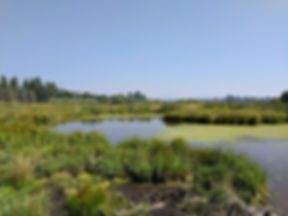
Fall River Resource Conservation District

Soil Conservation
& Management
Managed carefully, soils are a reusable resource, but in the scale of human lifetimes they cannot be considered a renewable resource. In many farmed and forested areas of our world we are contributing to degradation of soils far faster than nature can rebuild them. Active soil management will be necessary for ecological and agricultural sustainability.


Strengthening Soil Health
Reducing Erosion
Vegetation
-
Maintain native vegetation cover across the landscape, especially near water systems. Undisturbed forest and dense grass provide the best soil protection.
-
Row crops, such as corn, soybeans, and potatoes offer little cover during the early growth stages and thereby leave the soil susceptible to erosion. Consider using cover crops between rows or leaving residues (mulch) from previous crops on the bare ground to prevent erosion and increase water holding capacity.
-
Cover crops can be used to provide soil protection between growing seasons, or permanently for widely spaced perennial plantings such as orchards and vineyards.
-
Conservation tillage- farmers and equipment manufacturers developed machinery that plant crop seeds while leaving behind most of the residues from the previous season. These systems produce equal or even higher crop yields while saving time, fuel, money, and soil.
Grazing
-
Maintain a dense vegetative cover on range and pasture land.
1. Rotate close-growing hay crops with row crops.
2. Rest over grazed sections of land to allow recovery.
-
Cattle trails, as well as ruts from vehicles, can channelize runoff water, developing gullies that eat into the landscape.
Contour Cultivation & Terraces
-
Rows of plants can slow the flow of runoff water if they follow the contours across the slope gradient. Even more effective is planting on ridges built up of soil along the contours. Water can collect and be directed to grassed waterways.
-
Terraces reduce the effective length and gradient of a slope. Break up the slope to allow the water more time to infiltrate.
Use of Biochar on the Landscape
Biochar is a fine-grained charcoal like substance with pure carbon content and is the name given to charcoal when it is used for a particular purpose, e.g. a soil amendment rather than when it is to be used as fuel. Like all charcoal, biochar is created by pyrolysis of biomass. Biochar is a stable, porous solid that can be used to soak up water, nutrients and metals.
When used as an agricultural soil amendment, it improves soil fertility and water and nutrient holding capacity and can endure in soil for thousands of years, giving it the ability to sequester carbon long-term.
